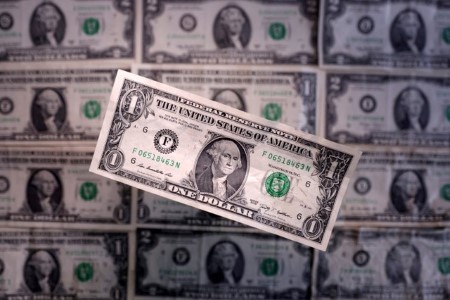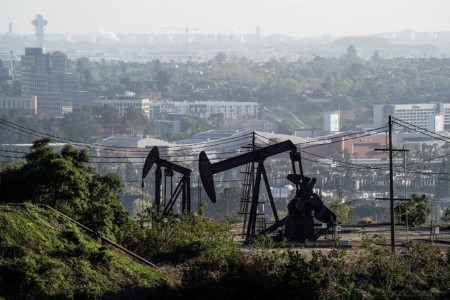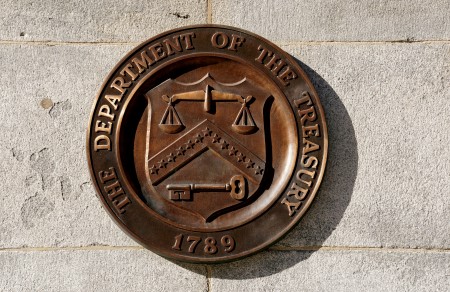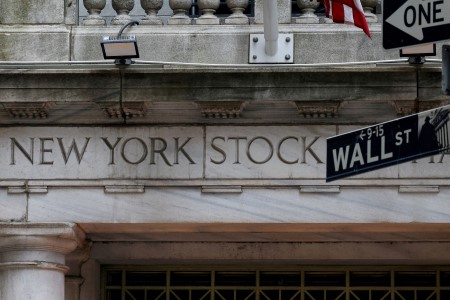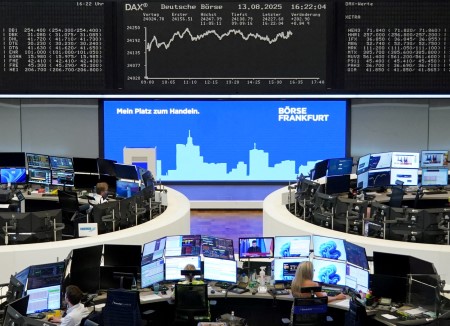NEW YORK – The dollar fell against major currencies on Tuesday as President Donald Trump’s unprecedented move to fire Federal Reserve Governor Lisa Cook renewed concerns over the central bank’s independence.
The euro rose 0.22% against the dollar to USD 1.1647 while sterling was last up 0.2% at USD 1.3481. Against the Japanese yen, the dollar fell 0.27% to 147.36 yen, and it slipped 0.28% against the Swiss franc to 0.8032.
The dollar index, which measures the greenback against a basket of currencies, was down 0.28% at 98.19.
Trump said he was removing Cook over alleged improprieties in obtaining mortgage loans, a step that could test the boundaries of presidential power over the Fed. In response, Cook said Trump has no authority to fire her from the central bank, and she will not resign.
Trump’s announcement surprised markets, but the reaction was relatively muted, with investors caught between concerns over the politicization of policy and the move’s potential payoffs for markets.
“(I)nvestor movement remained relatively muted as attention stayed focused on the repercussions of Jackson Hole and overnight news highlighting an elevated threat to Fed Governor Cook and, more broadly, to Fed independence,” said Uto Shinohara, senior investment strategist at Mesirow Currency Management.
The unpredictable actions of the Trump administration and the prospect of a more dovish Fed have kept the dollar in check, he added.
The market was also little changed after data showed US-manufactured capital goods rose more than expected last month, while consumer confidence slipped slightly in August.
The US president has repeatedly berated Fed Chair Jerome Powell for not lowering interest rates, although he has stopped issuing threats to fire him ahead of the end of his term in a little under nine months.
Traders are currently pricing in an 85% probability of a rate cut at the Fed’s September meeting, according to CME’s FedWatch Tool.
Morgan Stanley on Tuesday became the latest brokerage to forecast a cut in interest rates in September, joining global peers after Powell hinted at policy-easing next month in a speech last week.
“Monetary easing expectations are holding firm across the front end of the curve after the Conference Board’s latest measure of consumer confidence showed households becoming more concerned about employment and income prospects even as they turned slightly more optimistic on the business environment,” said Karl Schamotta, chief market strategist at Corpay in Toronto.
“With the Fed’s reaction function shifting away from inflation and toward an emphasis on labor market conditions, these numbers should help ratify market pricing for at least two rate cuts this year, and add to the factors weighing on the dollar.”
While investors may be inclined to sell the dollar, lingering economic and fiscal worries in Europe also narrow the available currencies for bets on a decline in the US currency, said Kenneth Broux, head of corporate FX and rates research at Societe Generale.
France’s government bonds fell on Tuesday as the country’s minority government looked increasingly likely to be ousted next month.
The 10-year government bond yield rose to a peak of 3.53%, its highest since March and adding to Monday’s 7 basis point climb. Bond yields move inversely to prices.
Worries over renewed political instability in France added to jitters in global bond markets about the independence of the US Federal Reserve, which contributed to selling in government bonds from the US, Britain and Japan.
In cryptocurrencies, bitcoin rose 1.03% to USD 110,796.68, attempting to break a three-day losing streak, while ether climbed 4.37% to USD 4,548.71.
(Reporting by Jaspreet Kalra and Laura Matthews; Editing by Kirsten Donovan, Chizu Nomiyama, Ros Russell, and Edmund Klamann)







 DOWNLOAD
DOWNLOAD




